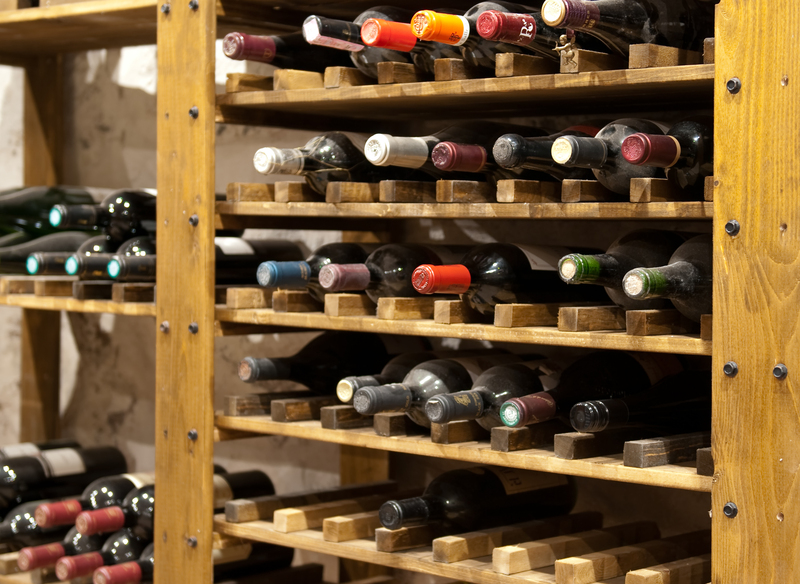Ensuring Your Piano's Safety During a Move
Posted on 18/06/2025
Moving a piano is both an art and a science. This elegant instrument, whether a grand piano, upright, or baby grand, is not only a significant financial investment but often holds deep sentimental value. Ensuring your piano's safety during a move is paramount--not just to protect its appearance but to preserve its intricate internal mechanics and signature sound. This comprehensive guide outlines every step, tip, and tactic to guarantee your piano's protection while relocating.
Why is Piano Moving So Challenging?
Pianos are unusually heavy, delicate, and complex. They house thousands of moving parts, sensitive strings, and a variety of delicate wood materials. Abrupt movements, improper lifting, or insufficient packing can cause significant, and sometimes irreparable, damages. Here are a few reasons:
- Weight & Shape: Pianos can weigh from 300 to over 1,200 pounds and are awkward to maneuver.
- Internal Mechanisms: The action (key and hammer mechanism) is sensitive to jolting and moisture.
- Exterior Vulnerability: Glossy finishes easily scratch or chip.
- Tuning Sensitivity: Any shifting or shock can throw off the intricate tuning.
Types of Pianos and Their Moving Needs
Different pianos require slightly different handling techniques. Here's a quick overview:
- Upright Pianos: Compact but heavy, with much of the weight concentrated in their top half.
- Grand & Baby Grand Pianos: Larger and more complex due to their shape and delicate legs and pedals.
- Digital Pianos: Less at risk, but still require careful transport to avoid electronics damage.

Preparation: The First Step to Secure Your Piano's Safety During a Move
1. Plan Accordingly
- Measure your piano and pathways--doors, hallways, and stairs at both current and new locations.
- Clear routes of any obstacles that could trip movers or endanger the instrument.
- Determine the layout at the destination in advance to minimize unnecessary moving or repositioning.
2. Assemble the Right Equipment
- Piano dolly and moving straps for stability and leverage
- Heavy-duty furniture blankets to cushion bumps and avoid scratches
- Padding, shrink wrap, and tape to secure covers without harming finishes
- Special gloves for better grip and hand protection
- Ramps for stairs and uneven surfaces
3. Disassemble What You Can
- For grand and baby grand pianos, remove the legs, pedals, and lyre as per manufacturer recommendations.
- Uprights typically require only the removal of the music rack or protruding parts for safe passage.
- Keep all screws and parts in a labeled bag for easy reassembly.
4. Secure and Protect Every Part
Proper packing is vital:
- Wrap all detachable components in blankets or bubble wrap.
- Secure the piano lid, but never lock it, in case the key is misplaced.
- Cover major surfaces with thick blankets and secure with stretch wrap.
The Best Practices for Safely Moving Your Piano
Lifting Techniques
- Always use at least three to four people for heavy pianos.
- Lift from the base; avoid stress on legs or keyboard lid.
- Keep the piano vertical: Never tilt on its back or sides for long periods.
Transporting Through Tight Spaces
- Take extra care with turning corners and navigating stairs.
- Use ramps where possible to minimize jarring movements.
- Go slow and communicate clearly between movers.
Loading Into the Moving Truck
- Ensure the piano is placed on a *level surface*--not stacking anything atop it.
- Secure the piano with straps to prevent shifting during transit.
- Keep away from temperature-sensitive cargo, as extreme heat can warp wood and glue.
Arrival and Unpacking
- Repeat the careful, steady approach when unloading.
- Bring the instrument directly to its destination room, avoiding excess movement.
- Reassemble parts with care, referencing manuals as needed.
Should You Hire Professional Piano Movers?
For the utmost in piano relocation safety, hiring a specialized piano moving company is strongly recommended. Pros have:
- Experience in handling even the most challenging moves (tight spaces, stairs, narrow hallways).
- Specialized equipment that many households do not have.
- Insurance to cover damages in rare mishaps.
- In-depth knowledge about the instrument's vulnerabilities.
Attempting a DIY move should be reserved for lighter digital pianos or small uprights with adequate manpower and equipment.
What to Look for in a Reliable Piano Mover
- Licensed and insured with specific experience in piano moving
- Positive online reviews and references
- Transparent pricing and detailed service contracts
- Clear plan for packing, moving, and reassembly
Common Risks When Moving a Piano and How to Prevent Them
- Scratches and Dings: Always use thick blankets and don't rush corners or doorways.
- Leg and Pedal Damage: Disassemble and wrap these parts separately.
- Internal Damage: Avoid tilting or dropping the piano, and keep it upright as much as possible.
- Tuning Instability: Expect to retune after the move, as any shifting can impact tuning pins and strings.
- Humidity and Temperature Fluctuations: Avoid leaving the piano in hot trucks or humid storage.
Giving Your Piano Its Best Chance After the Move
Even with the most careful techniques, a piano's delicate internal components may be impacted by the physical and environmental changes of moving. Here's how to nurture your instrument after the journey:
- Let your piano rest for at least a week in its new home before tuning; this lets it acclimate to the new environment.
- Consider a professional inspection to verify that nothing was dislodged or damaged.
- Place your piano away from direct sunlight, heat sources, and damp areas to prevent warping and finish damage.
- Tune your piano after it has rested, and continue regular maintenance to preserve its voice and value.
The Costs Associated with Ensuring Piano Safety During a Move
Investing in safety is always more affordable than the cost of repair or replacement. Professional piano moving costs typically range between $150 to $1,000 depending on:
- Distance of the move
- Type and size of the piano
- Complexity (stairs, tight turns, multi-level buildings)
- Insurance and special handling requirements
For those choosing the DIY approach, expect to rent or buy specialty moving equipment and purchase packing materials--still a worthwhile expense for peace of mind.

FAQs on Moving Your Piano Safely
Q: Can standard movers handle a piano?
A: Some can, but unless they have specific piano-moving experience and equipment, it's risky. For best results, choose companies that advertise piano-moving services.
Q: Should I tune my piano immediately after moving?
A: No--wait at least a week to allow the instrument to acclimate. Immediate tuning can be less effective as the piano may need a second adjustment once settled.
Q: Is it ever safe to move a piano alone?
A: Never attempt to move a piano solo. Too much can go wrong, leading to injury or disaster for both you and the instrument.
Q: How do I protect my floors?
A: Use padding, floor sliders, and ensure all movers lift instead of drag. Protective coverings prevent scratches and gouges.
Conclusion: Prioritizing Your Piano's Safety During a Move
Your piano deserves meticulous care during a move. By planning ahead, using the right equipment, seeking professional help where needed, and understanding its unique requirements, you'll significantly minimize moving risks and keep your piano providing beautiful music for years to come.
If you're contemplating a move, never compromise on the safety of your cherished instrument. Whether you're moving your piano across town or across the country, keeping these tips at the forefront will ensure your piano's safety during a move--and offer the peace of mind that only the sweet sound of your favorite keys can bring.
With the right knowledge, preparation, and assistance, piano moving can be a harmonious experience.
